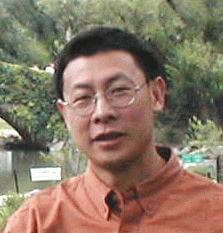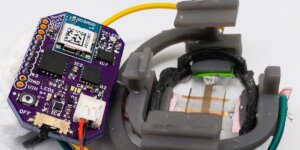
Wei Ye was the lead researcher for the newly released sensornet protocol
A new communication protocol for wireless sensor networks just released by the Information Sciences Institute is the most efficient yet, more than a tenfold improvement on previous versions.
Sensor networks, or “sensornets” are an emerging way to monitor inaccessible and unwired places. They depend on placing numerous sensor units across a wide area. The units communicate with each other, and send the information they gather at intervals to the human operators.In wilderness parks, for example, such networks are used to monitor activity by wildlife. Ordinary wireless methods, such as WiFi won’t work for this purpose. Sensornets are also being explored for industrial applications, in oilfield monitoring and management, for example.
The units are battery powered, so minimum power consumption is critical – but at the same time, continuing coverage is essential.
The activities of the units are orchestrated by special operating rules called Media Access Control (MAC) protocols. More than three years of ISI research &ndash supported by the National Science Foundation, Intel and other funders &ndash produced a new protocol, SCP-MAC, which marked a dramatic improvement in energy efficiency.
The protocol combines two techniques: ‘low power listening” in which units switch on for only very brief periods; and “scheduled channel polling” which synchronizes and schedules the listening.
 “The basic approach of SCP-MAC is to let units alternate periods of sleeping with very brief periods of listening, as shown in the figure,” says Ye. “Such a sleep pattern is found on birds, who need to keep vigilance while sleeping. To minimize the listening cost, SCP-MAC utilizes ‘low-power listening,’ which detects channel activity very quickly.
“The basic approach of SCP-MAC is to let units alternate periods of sleeping with very brief periods of listening, as shown in the figure,” says Ye. “Such a sleep pattern is found on birds, who need to keep vigilance while sleeping. To minimize the listening cost, SCP-MAC utilizes ‘low-power listening,’ which detects channel activity very quickly.
“It further reduces the transmission cost by synchronizing the listening schedules of nodes, so that a unit can wake up its neighbors by transmitting a short tone.”
Previous protocols required individual units to be active for approximately 2-3 per cent of monitoring time- that is, active about 29-45 minutes of every day of sensornet activity. SCP-MAC reduced the monitoring time to less than two minutes each day.
The system was developed by ISI research scientist Wei Ye, working with project leader John Heidemann and programmer Fabio Luis Silva in the ISI Laboratory for Embedded Networked Sensor Experimentation.
The trio gave a final presentation on the research in November at the Proceedings of the Fourth ACM SenSys Conference in Boulder Colorado.
In February, the group made the new protocol, written in the TinyOS operating system optimized for Mica2 individual sensor modules, available for download by sensornet users and developers.
The download url is:
http://www.isi.edu/ilense/software/ scpmac/
Published on February 15th, 2007
Last updated on August 6th, 2021












